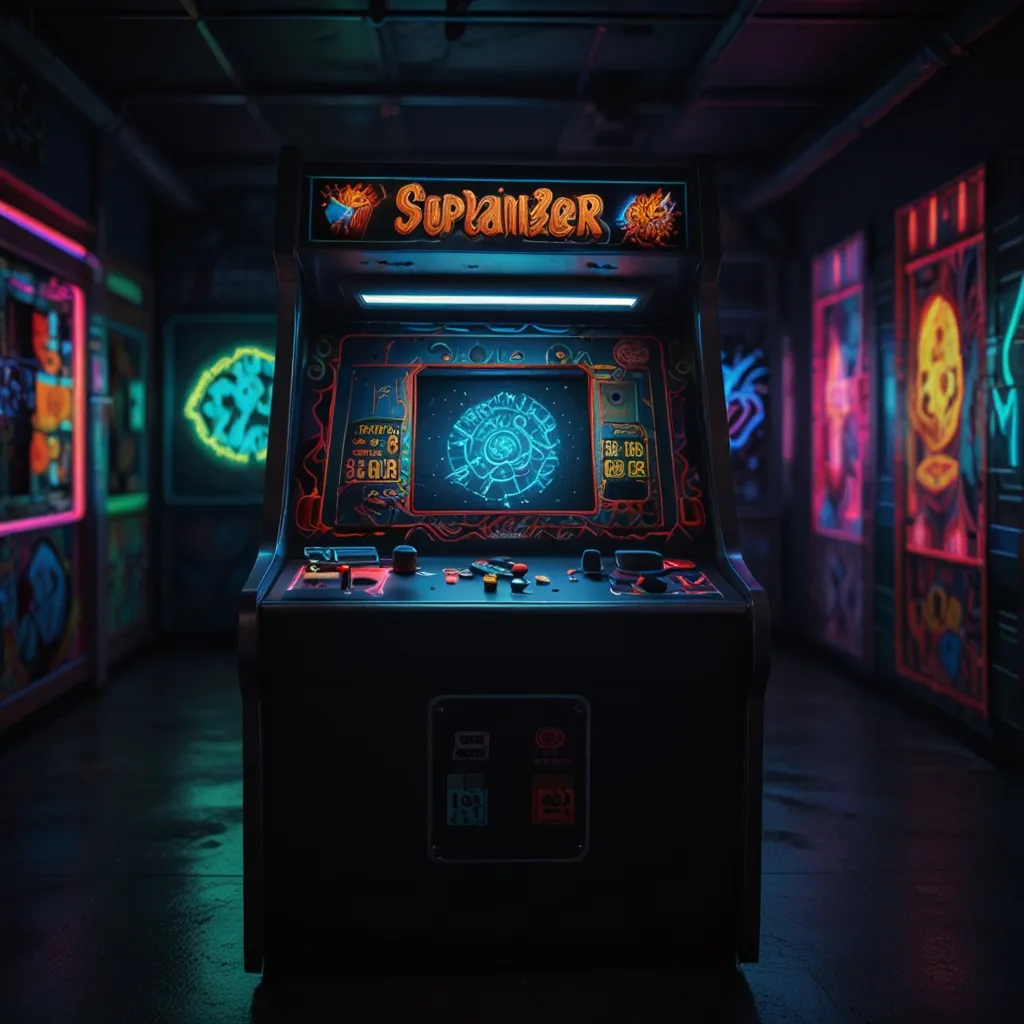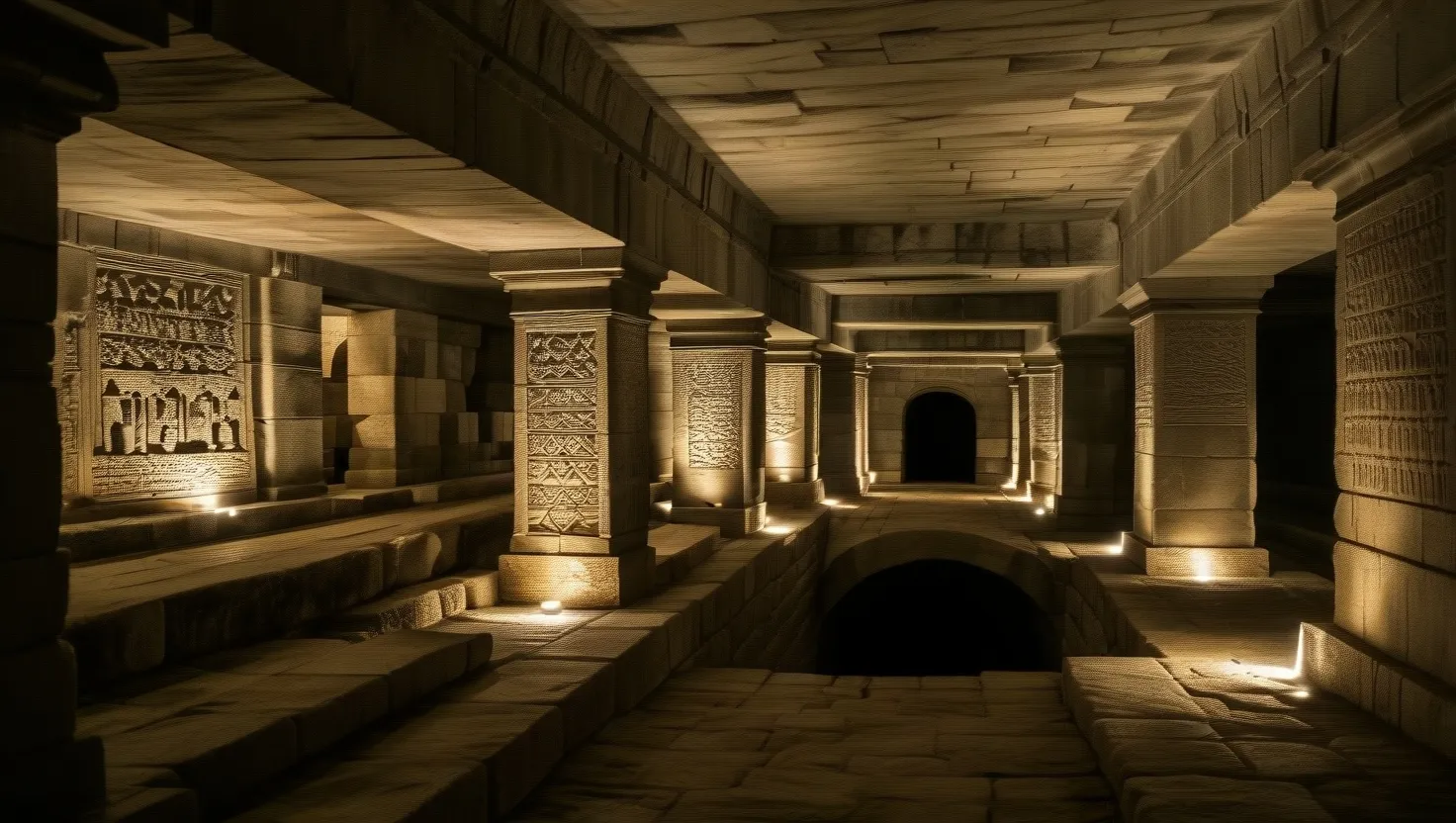In 1981, a little arcade in Portland became home to a mystery that would go on to become one of the most intriguing urban legends of the gaming world, involving a game by the name of Polybius. This wasn’t an ordinary game, far from it. Gamers playing Polybius experienced migraines, seizures, and in some extreme cases, heart attacks and strokes. But what really baffled folks was how the game’s eerie appearance seemed to induce hallucinations, amnesia, and aggressive behavior. It was as if an invisible puppet master was pulling the strings, manipulating players in ways never seen before.
The legend goes that the U.S. government had a hand in it, suggesting the arcade phenomenon was no mere coincidence but a controlled experiment. This narrative captured imaginations because it built on real fears, considering similar instances happened around the time.
In the world of Polybius, gamers would find themselves entranced by psychedelic visuals and strange geometric patterns. The disturbing soundtrack and subliminal messages only seemed to heighten this trance-like state, plunging players into a realm where their bodies could betray them at any moment. The German-sounding company responsible for the creation of Polybius, according to the lore, was “Sinneslöschen,” which loosely translates to “sense deletion.” It’s a name that speaks volumes, though it’s interesting to note this company never truly existed.
Two Portland teenagers reportedly vanished after engaging with the arcade machine. These events added layers of mystery and fear, leading to whispers about the game’s addictive quality, and suggesting some type of sinister recruitment or abduction scheme. Curiously, lots of teenagers faced off physically at the arcade, vying for a turn on this suspect game, incidents that sometimes even resulted in death.
But where did Polybius disappear to, almost as suddenly as it arrived? This question remains at the core of the legend, baffling those who dared to dive into the details. Internet sleuths and conspiracy theorists alike claim it echoes in the corners of the internet. Searches yield blurry images of an allegedly existing arcade cabinet, cloaked in digital ambiguity, further muddying the waters.
Interestingly, discussions about Polybius surfaced on internet forums as early as the mid ’90s, yet no solid evidence from that era backs up those claims. It’s like trying to catch smoke with your bare hands—the more you clutch, the less you hold.
When delving into the gameplay elements, Polybius is rumored to have used graphics similar to games like Tempest or Battlezone, which were popular vector-based games at the time. And for those familiar with gaming history, it echoes the past effectively, linking a colorful explosion of lights and sounds with infamous anecdotes of gamers collapsing or facing medical emergencies.
Behind these tales, real incidents emerged, painting the arcades of the early ’80s as places steeped in mystery and danger. A young boy named Michael Lopez once collapsed mid-game at an arcade after experiencing a migraine triggered by Tempest’s flashing visuals. Similarly, others succumbed to physical ailments, while merely trying to outdo their highest game scores. Stories like the fate of Jeff Daly, whose undiagnosed heart condition led to tragedy after playing Berserk, left a chilling mark, one stomach-churning high score attempt at a time.
The mid-’80s were a time of burgeoning technological fascination and growing fear among parents about these newfangled video games that kept their kids ripe with energy and glued to screens across the globe. At a time when any new vice was scrutinized for its addictive potential, it was natural for these stories to feed paranoia. But one has to cut through the haze to the heart of the matter to unveil the truth.
The U.S. government indeed conducted operations that included arcade games as strategic tools. FBI records reveal that Portland arcades were bugged and raided, often without raising as much as an eyebrow from onlookers. Engaging gadgets of Simple and Standard operations included games like Tempest, chosen not for their gameplay but for the room behind the arcade panels—fit for secret cameras and microphones. Suited agents came and went, extracting tapes while leaving more than just quarters behind.
Meanwhile, the shadowy CIA had its history of infamous mind-control programs. Most notably, the MK-Ultra program saw the agency delving into some seriously dark psychological experiments. These experiments aimed to unravel the mysteries of brainwashing and mind control, with tests spanning from American prisons to clandestine overseas facilities. LSD dosing and psychological terror took center stage during this operation, which is a chilling testament to just how far the government went in pursuit of the elusive psychological edge.
All these events played out in a time where clandestine operations were par for the course. Given this backdrop, the Polybius legend naturally resonated. The idea of government experimentation via addictive psychological gaming wasn’t far-fetched when considering historical context. The truth is certainly stranger, if not as fun, as fiction.
However, digging deeper reveals no evidence that a game by the name of Polybius ever existed. It appears the legend was brilliantly crafted, a riff on existing government experimentation and arcade gaming’s pervasive nature. In February of 2000, a listing on the arcade database, Coinop.org, created an entry about this mysterious game, likely concocted by its owner, Kurt Koller, as a captivating hoax. He stirred the legend’s cauldron further by tipping off GamePro magazine, leading to mentions in the media, which only served to cement its position in pop culture legacy.
Through mentions on platforms like Slashdot, Polybius gained cult status, giving life to a tale many ardent gamers enjoy unraveling to this day.
It’s fascinating to think that the core of this urban legend lies in a mix of real-world paranoia, genuine incidents, and speculative conspiracy. The legend has become as much a part of gamer lore as it is a reflection of society’s grappling with technology, surveillance, and control.
So, while the irrefutable truths of addiction, governmental manipulation, and technological experimentation swirl through the narrative, the game itself remains as vaporous as fog. Its existence was probably a clever fabrication, blending whispers, fears, and the lure of unraveling the supposed game behind the arcade’s closed curtains. Yet, the suspicion it sparked continues to haunt those with a penchant for tales that twist reality into something darker, stranger, and possibly more thrilling than perhaps it ever was.






